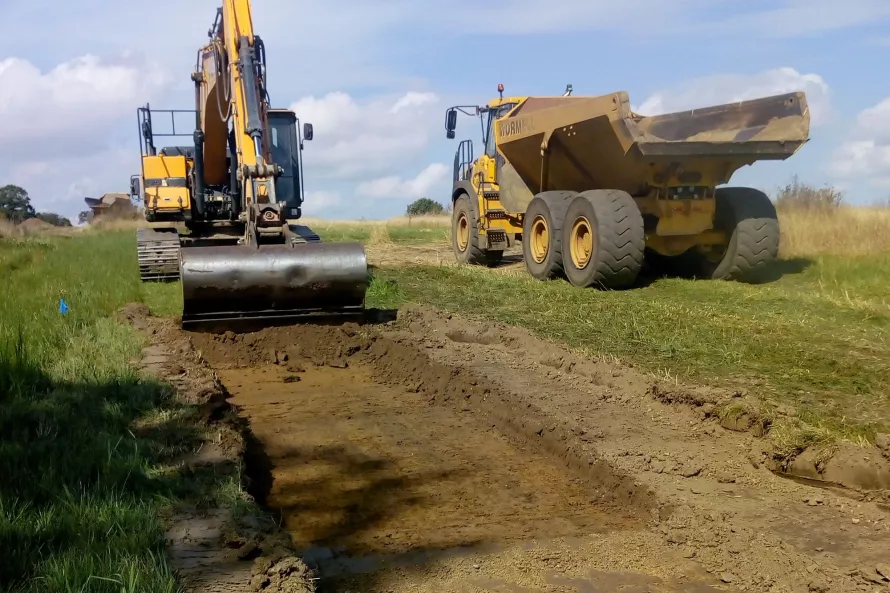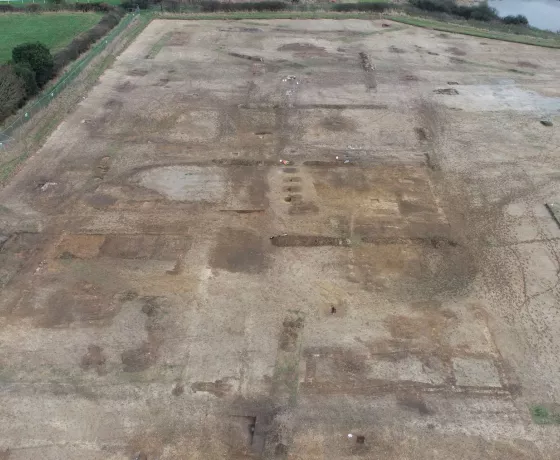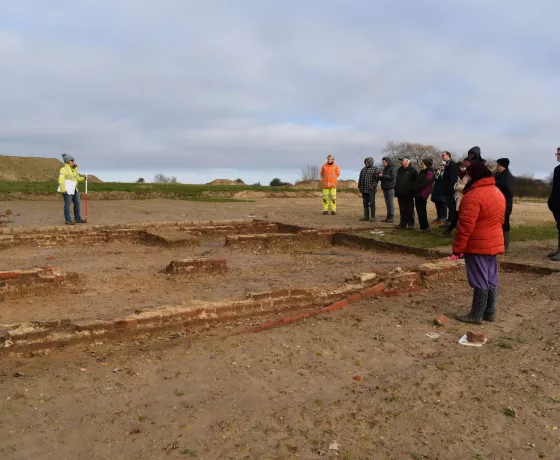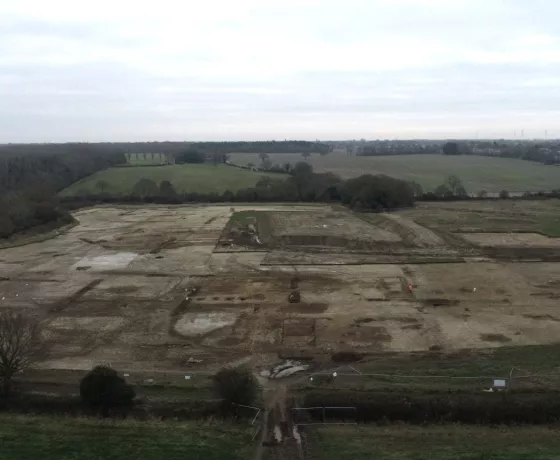During our trial trenching at the start of the year, we identified five areas at the north end of our site with prehistoric and Roman archaeology to investigate further. Over the past two weeks, the team have been digging the features which show where the ground has been disturbed by people in the past.
We’ve re-located several straight narrow dark lines in the ground. These show where there were once ditches, dug to drain and divide up the surrounding land about 2,000 years ago. The soil dug from the ground was piled up in a bank beside the ditches. Once the ditches fell out of use, the banks slumped and gradually filled the ditches with soil again. Any plants growing up and dying back would have added organic matter to the ditches, which is why the backfilled soil appears darker than the natural sand and gravel at this depth.
Our archaeologists, Harry and Jack, have excavated sections through the ditches to analyse the profiles. They’ve recorded their size, depth and shape, and looked to see if they can spot changes in the colour and texture of the soil which could tell us whether the ditches were cleared and re-cut, and how gradually they backfilled. These clues give us an insight into farming practices during the Roman period – how well the field boundaries were maintained, how wet the land was, and how long the fields were in use.
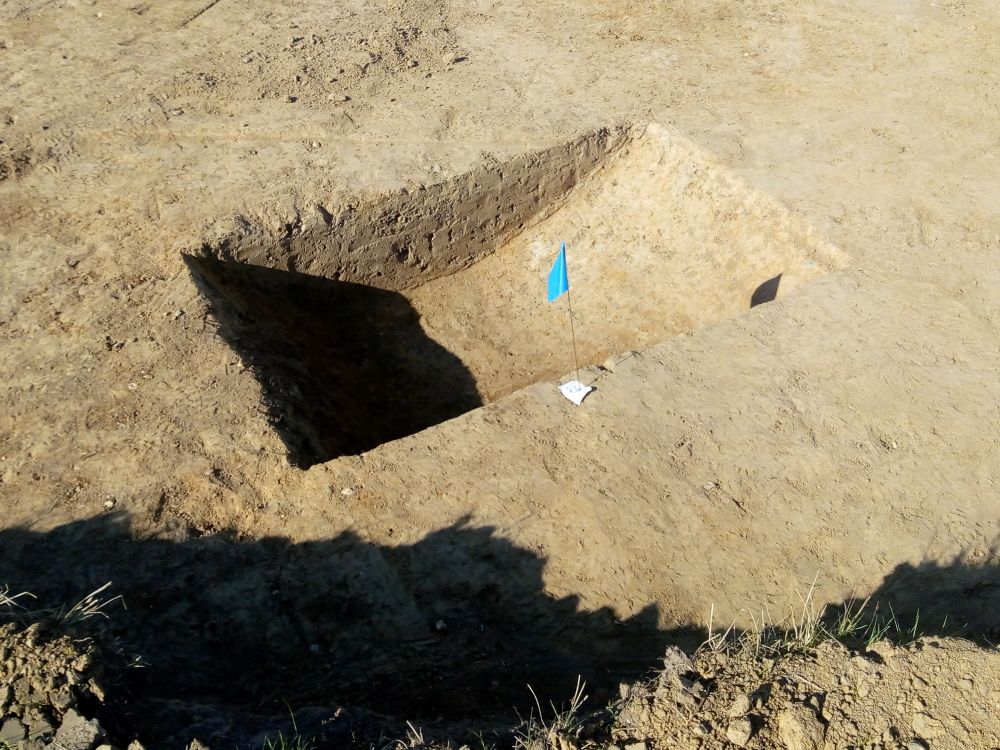
The team are using hand tools like mattocks and trowels to loosen and remove the soil and recover artefacts. Some of the ditches contained small, abraded pieces of pottery but not in sufficient quantities to suggest that they were close to areas where people were living and routinely throwing away their rubbish.
We have, however, found some small round pits which we think are earlier, as they contained different types of pottery. Archaeologists usually date features in the ground from their associated artefacts. Pottery is particularly useful as it survives well in the ground and styles have changed a lot over time. These pits contained prehistoric pottery (probably Neolithic). These broken fragments would have come from storage and cooking pots, broken and thrown away, buried in these pits probably along with other rubbish (like food waste) which has rotted away over time.
Further south at Barrack Field, we’ve just started to remove the topsoil from the main large excavation area over the remains of the Napoleonic-era military barracks. We’ve only stripped the soil around the perimeter of the area so far, but there’s lots of archaeology showing up already. Our Project Officer, Nick, has been supervising the mechanical digger and spotted a nice big chunky sherd (fragment) of pottery on the surface of this area. It looks to be from the rim of a pot. It has a red-orange glossy glaze on the outside, and the fabric (the body of clay from which the pottery was made) is an orange colour typical of earthenware used in the post-medieval period – and similar to modern terracotta!
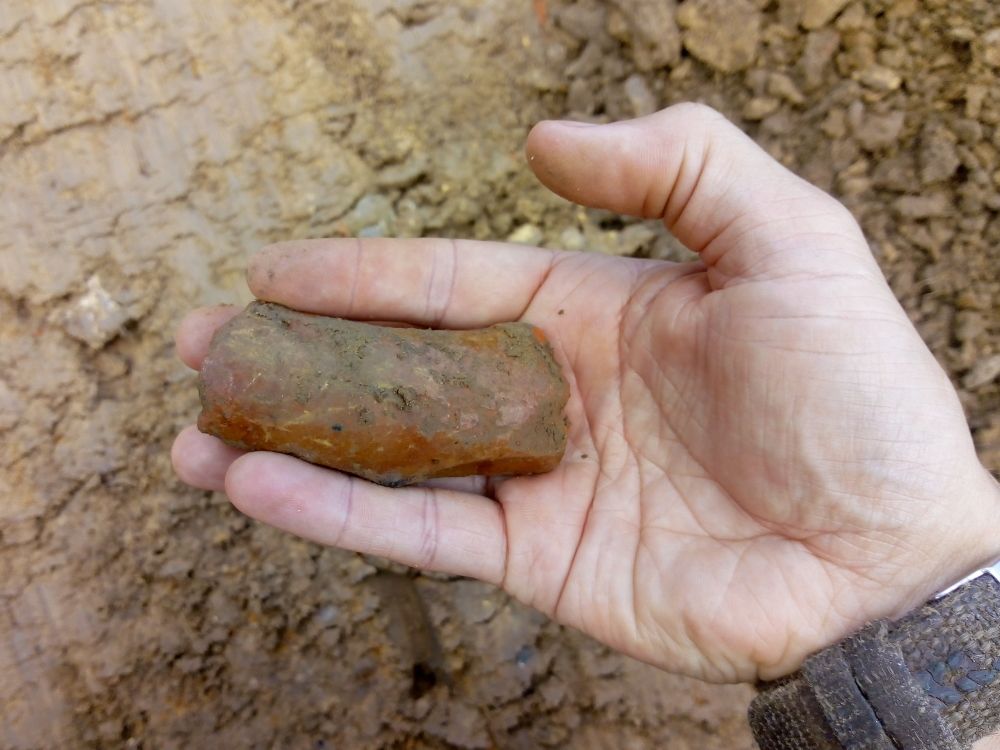
Other posts in this collection
Read our latest posts about the archaeological investigations at Weeley.

